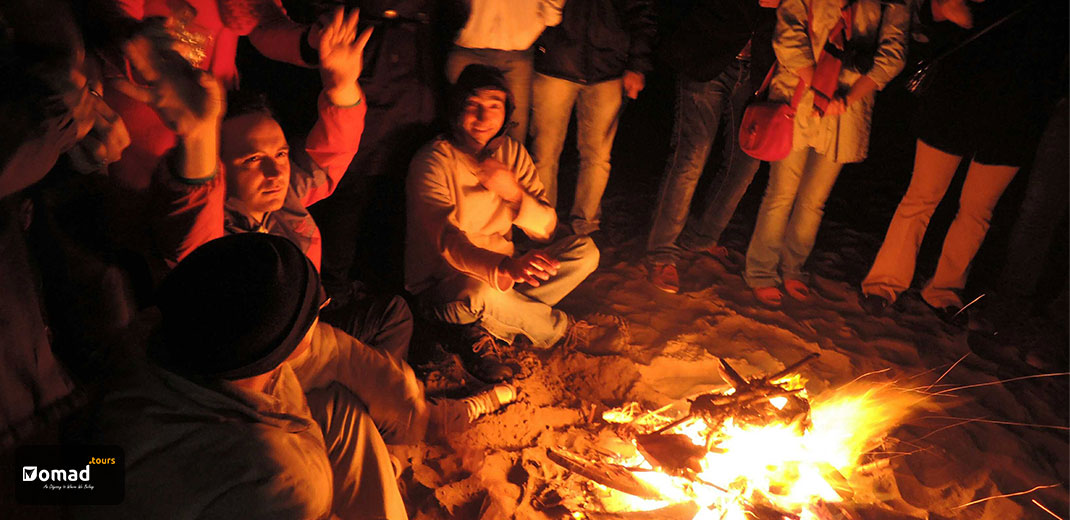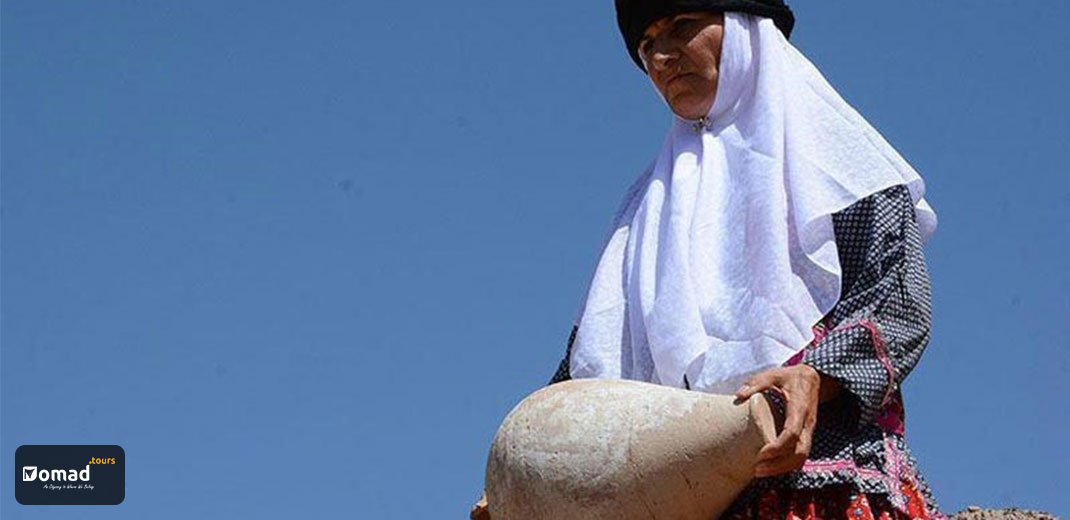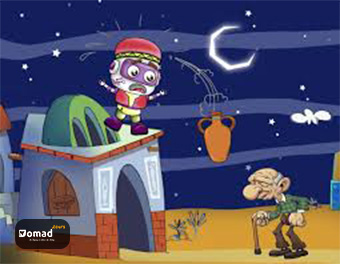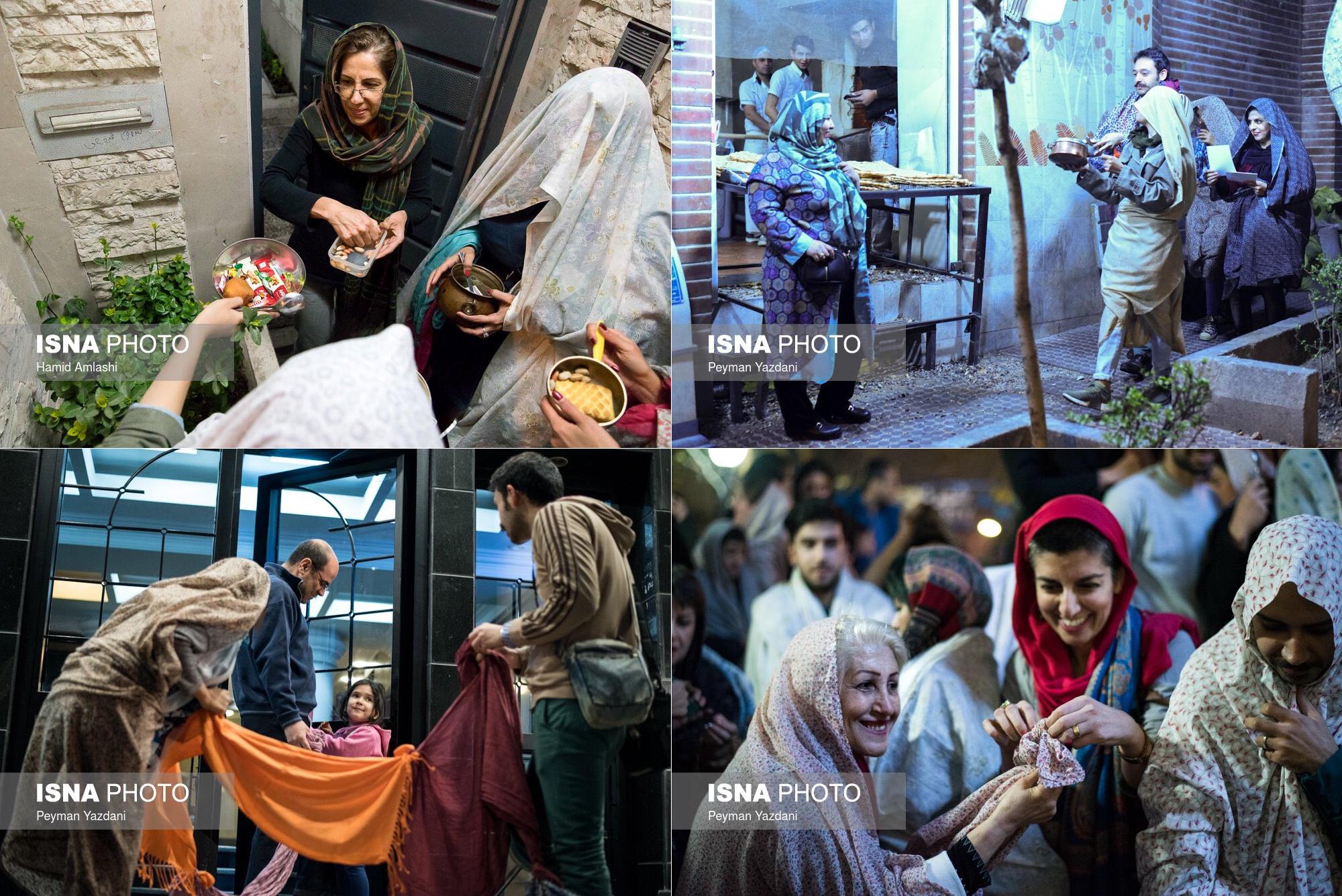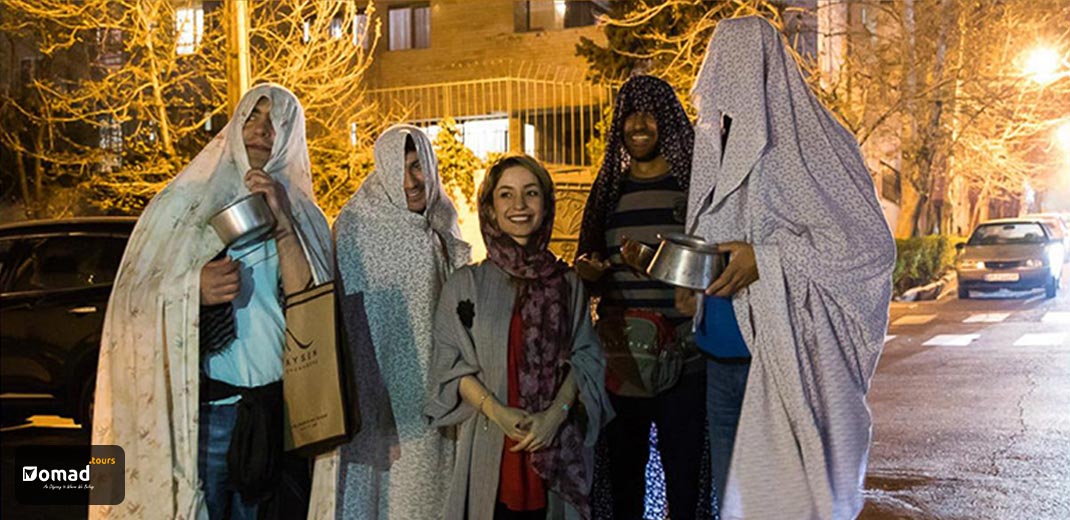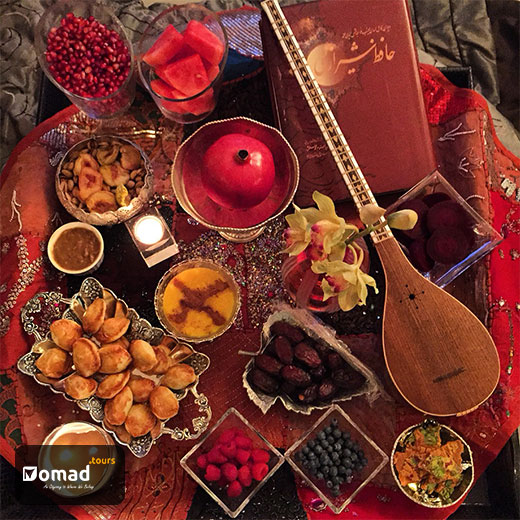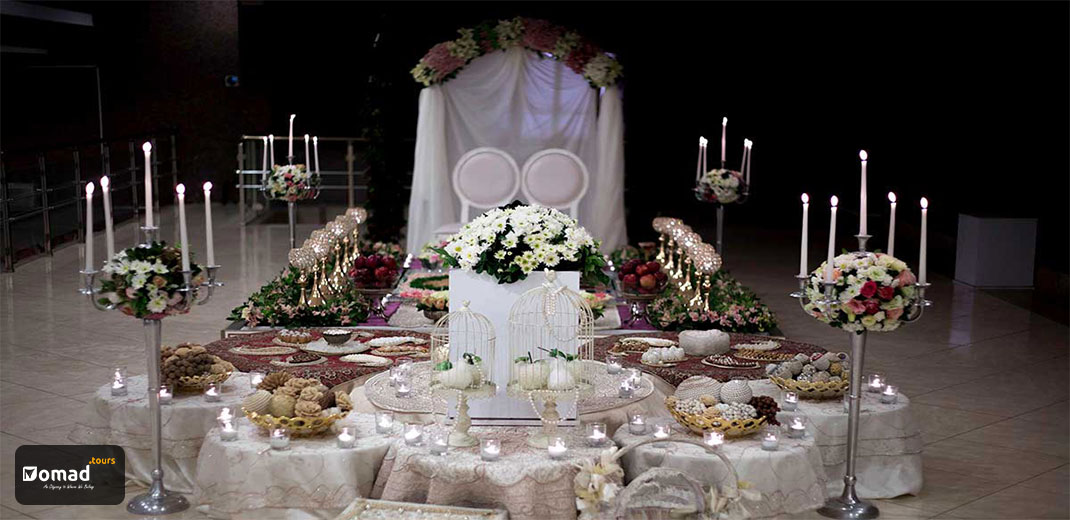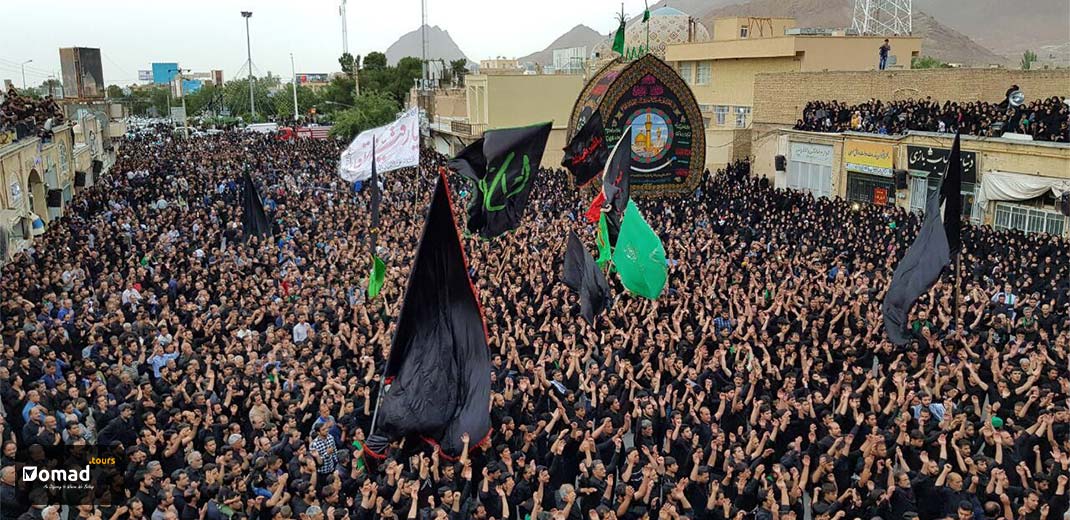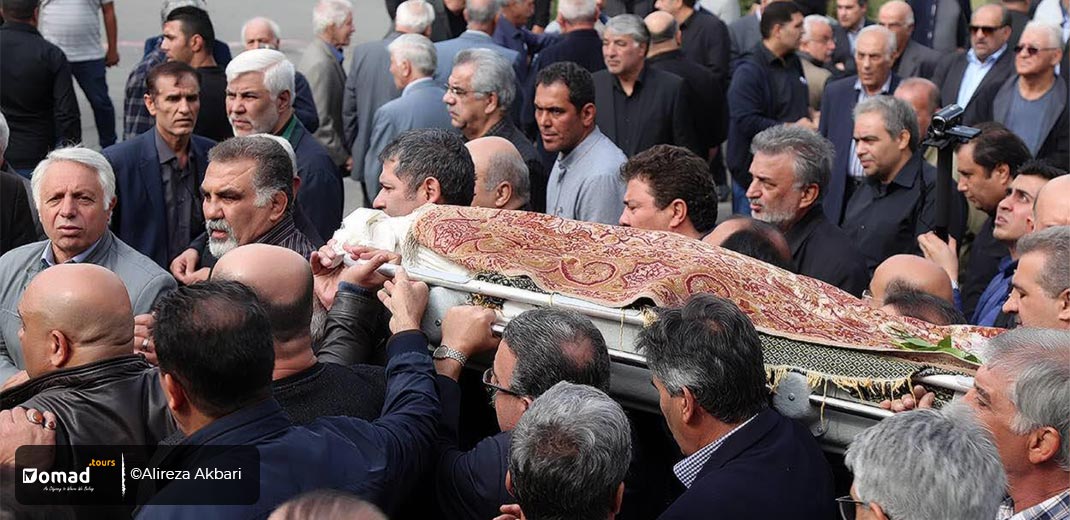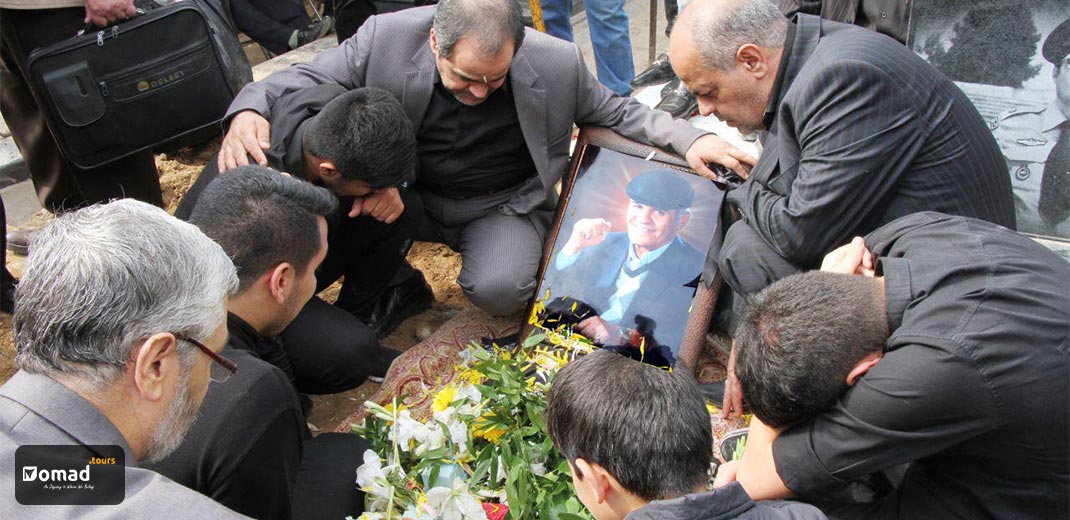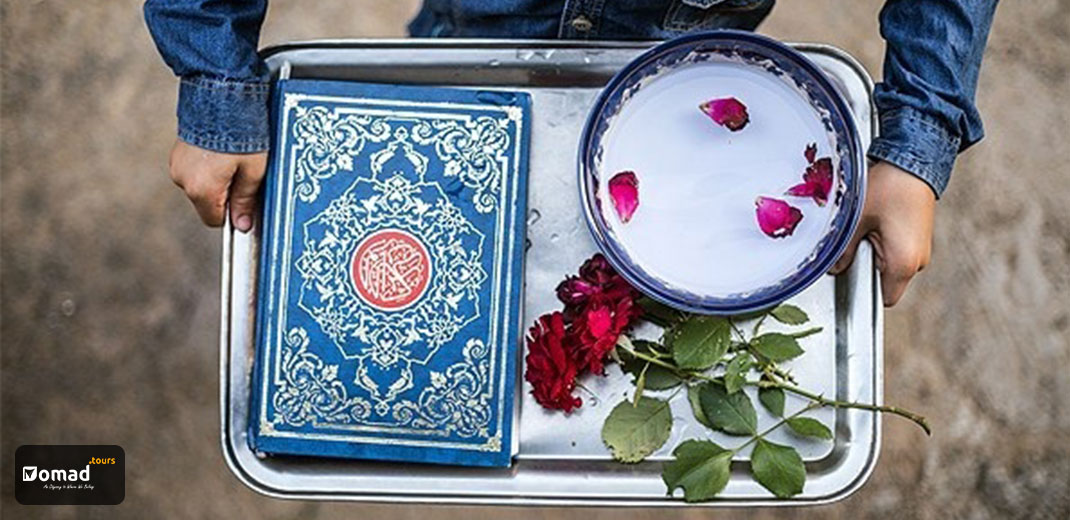Every country is featured with its culture and traditions. Having a very rich history and culture, there are plenty of original Iranian Cultures and Traditions which can be quite attractive and new for tourists and culture lovers. Except for the religious ceremonies, most of the rest belong to the pre-Islamic Iran and Zoroastrianism.
Chaharshanbe Soori (Charshambe Suri)
Stemmed from Zoroastrianism, it is a popular festival on the last Tuesday night of the solar year. Charshanbe Souri is right before the arrival of the new year. At night people gather and burn the bush and jump over it to repel the evil and make the dreams come true. They sing “My yellow colour for you, your red colour for me” meaning that you take the fire’s heat and energy and give your negative energies to fire. Since people give all their bad energies and disease to the fire, the ashes are considered to be ominous. Iranians believe that by burning the bushes, all the bad vibes and disease goes away and it can be a good start for the new year.
Kuzeh Shekani (Breaking the Pottery Pitcher)
People put some ashes of the fire as a symbol of misfortune, some salt as a symbol of the evil eye, and a coin as a symbol of indigence in a pottery pitcher. Then every family member rotates the pitcher around their head and the last one takes it to the rooftop and throws it to the alley as if all the misfortune, evil eye, and indigence go away with it.
Ghashogh Zani (Stirring the Spoons)
Young people take a spoon and a copper bowl with themselves and at night they go to the streets. They go in front of some houses and start stirring the spoon on the bowl. The owner of the house brings some chocolate, sweets, nuts, or some money in the bowl. They typically go to seven houses to get a gift. Some times people wear some funny customs. It is like a trick or treats. َUsually at Ghashogh Zani, girls and boys cover themselves with Chador, in order not to be recognised.
Eavesdropping
Young girls who like to marry sooner, at the last Tuesday night of the year they head to alleys and eavesdrop. In case they hear good stuff, it is believed that their wishes come true. If they hear sad things, their wishes may not come true.
Nowruz
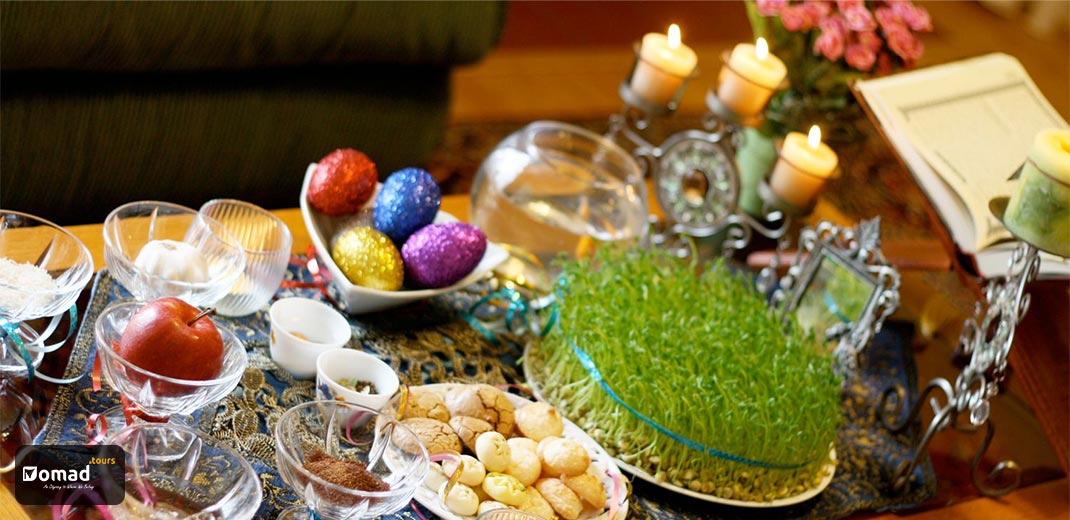
Haft Seen
The Iranian New Year which is called Norouz is one of the prominent Iranian Cultures which has so many great and fascinating rituals. It is originated from Zoroastrianism. The Persian New Year is at the beginning of the tropical year (March, 20th or 21st -depends on the year-). Before the new year, people clean their homes and buy new dresses. They also go to visit their families in Nowruz. In 2010, the United Nations recognized Nowruz as an international holiday. In Iran, people prepare Haft Seen (7 S’s) -they put 7 plants that start with seed on the table-. At the day or night of the New Year, most of the people eat Sabzi Polow ba Mahi which is herb rice with fish.
In the Nowruz; Persian New Year, we have inclusively talked about the different rituals done during the New Year in Iran.
Yalda Night (Shabe Yalda) (Shab Chelle)
In Iran, people celebrate the longest night of the year (winter solstice). It is celebrated as the victory of goodness over light. Families or a group of friends stay up late and read poems of Hafez or Shahnameh, eat delicious snacks and foods, and enjoy the time being together. Some of the traditions at Yalda Night is eating pomegranate, watermelon, and pumpkin. Red is the symbol of Yalda.
Wedding Traditions in Iran (Aroosi)
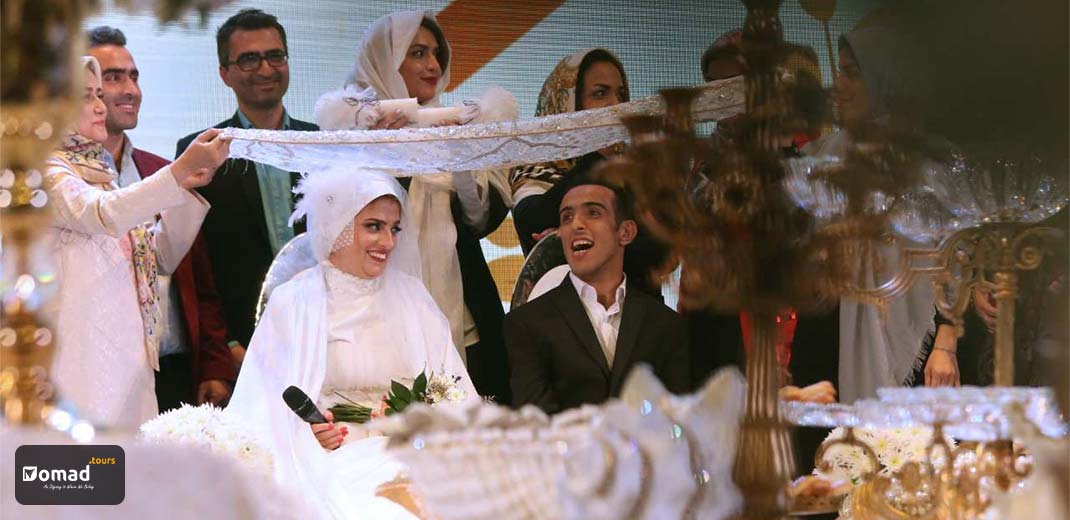
Aghd Ceremony
Ceremonies for weddings in Iran has different sections; proposal, Bale Boroon, Hana Bandan, the wedding day, Pagosha, and honeymoon are a happy part of Iranian Culture. They invite a great number of guests for the wedding day. Depends on the family, the guests’ number changes between 150 to even 2000 people. The wedding ceremony in Iran is called Aroosi which is the main ceremony, while most families hold another ceremony a few months before Aroosi which is called Aghd.
Aghd is a small ceremony that people just invite close friends and family. But it is good to know that small in Iran is defined a little bit different, Aghd is a ceremony with 50-200 people invited. They go to a register office and officially get married (or some people invite the clergyman over to their place). Typically after Aghd, the couples can easily go everywhere together but still do not live with each other, Aghd lasts around 3-12 months so that they can prepare the stuff for the house and arrange the wedding. After the wedding, they start living with each other. Not to mention that it might be a little bit different in large cities and some families. They are so many traditions for weddings in Iran depending on the city. We hope one day we find the time to write inclusively about it.
Religious Ceremonies

Tazieh
Religious ceremonies are an important part of Iranian Cultures and traditions. In Iran, people celebrate the birth dates of Mohammad Prophet and main Imams. They are also some Islamic events (such as Event of Ghadir Khumm, Eide Fetr, and etc.). They typically give away free juices and sweets at these dates. Muharram is a month in which the martyrdom of Imam Hussein has happened, it is a tragedy in Karbala called Ashura and Iranians have so many rituals for it. They also give away free lunch and dinners to people who love Imam Hussein.
The whole Moharram, people mourn for his death. They dress in black, go to mosques, and beat their chest in some street religious carnivals. People also go to mosques and places to hear the stories that clergymen tell about the instances at Karbala. Ta’zieh is also a theatre play about events like Imam Hossein’s tragic death. Shame Ghariban is the evening of 10th of Muharram. It is after the martyrdom of Imam Hussein when all the men were killed, and women and children were left alone in a desert. Shame Ghariban means the evening of the homeless.

Ahya Night
Shabe Ghadr (Shabe Ahya)
This spiritual Iranian Culture is also known as Shabe Barat, Night of Decree, and Night of Value is the night when the first verses of the Quran were revealed to the Islamic prophet Muhammad. People believe that on this night the blessings and mercy of God are abundant, sins are forgiven, supplications are accepted, and that the annual decree is revealed to the angels who also descend to earth, especially the angel Gabriel, referred to as “the Spirit”, to perform every and any errand decreed by God.[1]
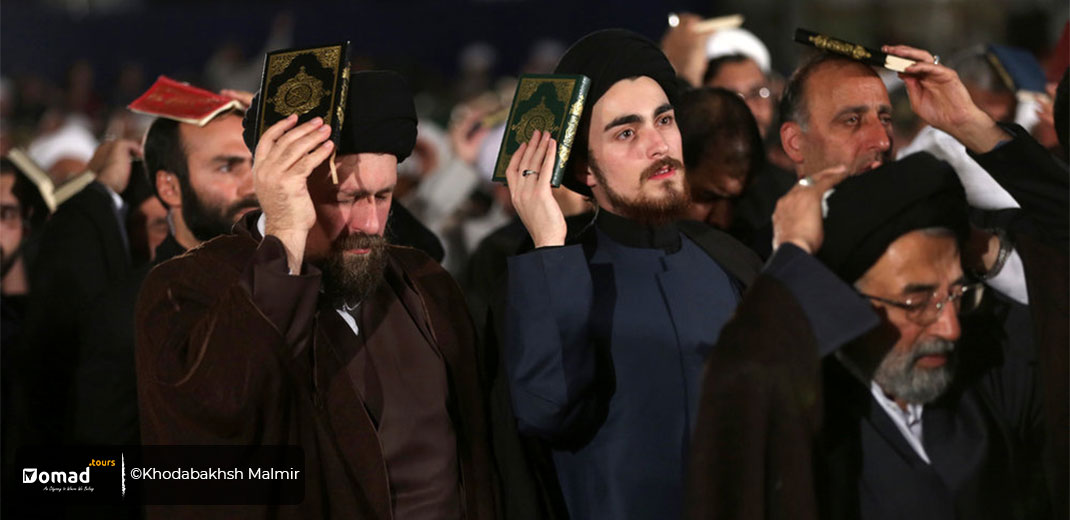
Shabe Ghadr
Iranian Funeral Traditions
In Ancient Iran when Zoroastrianism was practised, they washed the dead body and put it in a large stone tower. Because they believed that burying the deceased is not only unrespectful to the deceased but also bad for the environment. After Islam, people bury the deceased in graves. They are different rituals at 1st. 3rs, 7th and anniversary of the death date. People gather together and go to the Cemetry and take flowers and fruits to the grave. At the last Thursday of the year or first day of the New Year, people also typically go to the cemetery to the graves of their loved ones.
Ta’arof
As described in 36 Tips You Must Know Before Travelling to IRAN, it is a hospitality trait between Iranians and considered as one of the main Iranian Cultures. People refuse to get back for their service or be paid. They may also say you can have it or use it for free. But it is just a matter of being polite and it doesn’t mean as it is put. So the other one must insist on paying and after at least 2-3 time, the first person accepts to be paid or etc.
Spilling Water behind a Traveller
When someone is leaving for a long journey, a boy going to military service, or a student moving to another city for studying at a colleague, etc. people prepare a Quran and a glass of water. So the traveller must first kiss on Quran, then pass under the Quran three times and then leave for their destination. After the traveller is on his/her way, other spill water behind him to ensure their safe return.
Evil Eye
It is an old tradition but still seen among some people who are afraid of being jinxed. So for avoiding being jinxed or for fighting against the jinx, people burn Esfand/ Espand seed which is a dried seed of Peganum harmala, a perennial herb shrub from the Zygophyllaceae or Caltrop[2]. When Espand is burning, they wave the smoke around the person’s head. When the newlywed goes to their home or a student leaving his/her home town to go to the university or even moving to a new house or buying a new car, people burn Esfand to ward off the evil eye.
https://en.wikipedia.org/wiki/Laylat_al-Qadr

